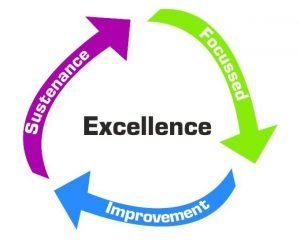Inventory Management is a critical Lean practice that focuses on maintaining the right quantity of materials at the right time, avoiding both excess and shortage. Effective inventory control helps organizations reduce waste, optimize cash flow, and ensure smooth production, aligning perfectly with Lean’s goal of creating value without excess.
⚙️ What is Inventory Management?
In Lean terms, inventory is considered one of the seven wastes (Muda) — excess stock hides problems, increases storage costs, and ties up valuable capital. However, having too little inventory can lead to production stoppages and missed deliveries.
The goal of Lean Inventory Management is to find the balance — maintaining minimum necessary inventory to support continuous flow and customer demand.
🧩 Key Elements of Lean Inventory Management
-
Just-in-Time (JIT): Receive and produce only what’s needed, when it’s needed
-
Kanban System: Visual signals to control material replenishment
-
ABC Analysis: Prioritize inventory based on value and usage frequency
-
Safety Stock Optimization: Maintain small buffers for critical items
-
Regular Audits and Cycle Counts: Ensure accuracy and visibility of stock
🚀 Benefits of Effective Inventory Management
- Reduces working capital and storage costs
- Improves production flow and responsiveness
- Enhances material traceability and accuracy
- Minimizes waste from obsolescence or overstocking
- Strengthens supplier coordination and reliability
🧭 Conclusion
Inventory Management is about control, visibility, and balance — not accumulation. By managing inventory the Lean way, organizations can achieve cost efficiency, smoother operations, and higher customer satisfaction.
“The right inventory isn’t more — it’s what moves at the right time, every time.”Inventory Management is a critical Lean practice that focuses on maintaining the right quantity of materials at the right time, avoiding both excess and shortage. Effective inventory control helps organizations reduce waste, optimize cash flow, and ensure smooth production, aligning perfectly with Lean’s goal of creating value without excess.
⚙️ What is Inventory Management?
In Lean terms, inventory is considered one of the seven wastes (Muda) — excess stock hides problems, increases storage costs, and ties up valuable capital. However, having too little inventory can lead to production stoppages and missed deliveries.
The goal of Lean Inventory Management is to find the balance — maintaining minimum necessary inventory to support continuous flow and customer demand.
🧩 Key Elements of Lean Inventory Management
-
Just-in-Time (JIT): Receive and produce only what’s needed, when it’s needed
-
Kanban System: Visual signals to control material replenishment
-
ABC Analysis: Prioritize inventory based on value and usage frequency
-
Safety Stock Optimization: Maintain small buffers for critical items
-
Regular Audits and Cycle Counts: Ensure accuracy and visibility of stock
🚀 Benefits of Effective Inventory Management
- Reduces working capital and storage costs
- Improves production flow and responsiveness
- Enhances material traceability and accuracy
- Minimizes waste from obsolescence or overstocking
- Strengthens supplier coordination and reliability






